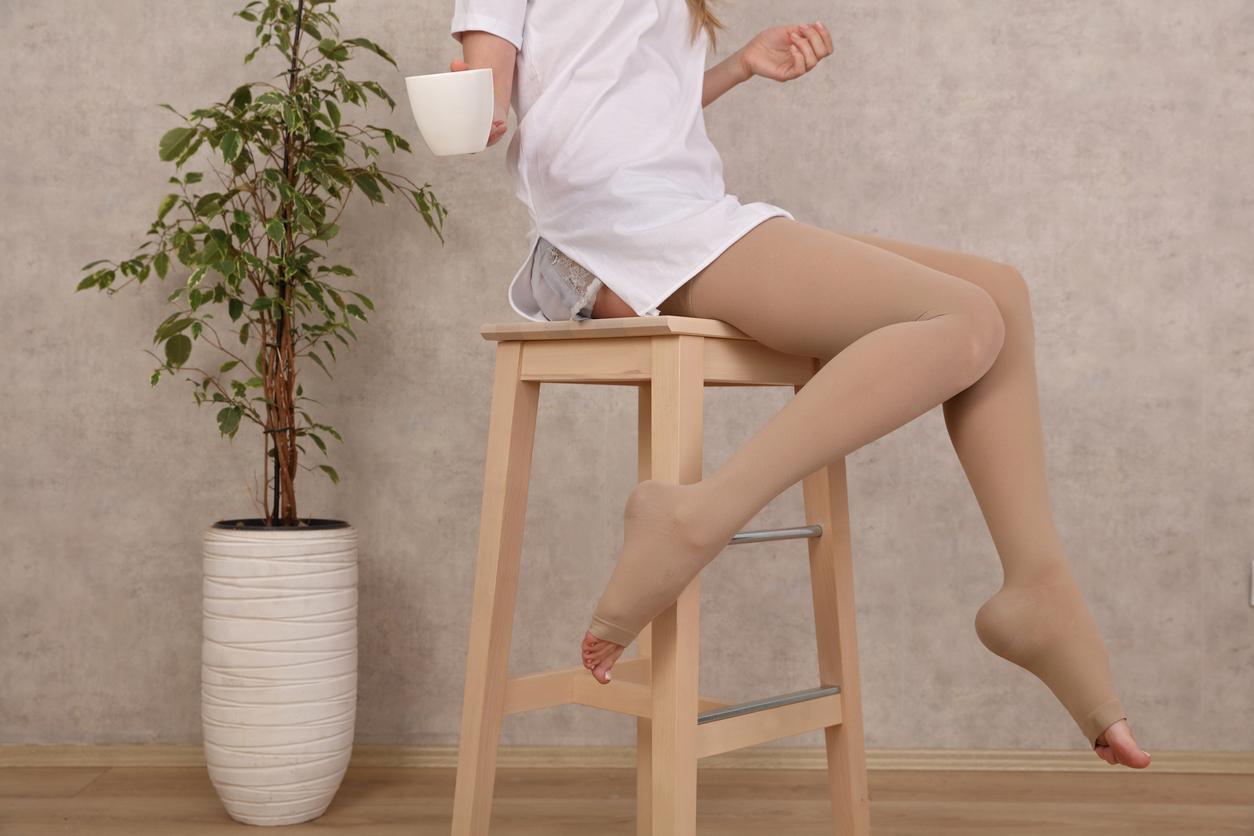From heavy legs to serious complications such as phlebitis, venous disease is chronic and progressive. Review of the 7 possible stages of this pathology.

Venous insufficiency is a very common chronic disease: there are 18 million people with venous insufficiency in France, or nearly one in three people. Without treatment, it is impossible to escape the progression of the disease and the aggravation of the symptoms: heavy legs are accompanied by varicose veins and can eventually lead to many complications. Yet only 30% of patients are treated. Many of them are unaware of being affected by this disease, which can occur from the beginning of adulthood and which affects women in priority (they represent 75% of patients), even if the disease also affects men.
Faced with the scale of untreated cases – approximately 12 million people – the need for better prevention is crucial since on average, 7 years separate the first symptoms from the first consultation. Above all, venous insufficiency is a disease whose evolution and complications are inevitable without appropriate and regular treatment. It has 7 clinical stages. Detailed review of these different stages with Dr. Vincent Crébassa, vascular doctor and phlebologist in Montpellier.
“Varicosities mark the entry into venous disease”
In the first stage, no varicose veins or spider veins are visible. According to Vincent Crébassa, “the person only has symptoms such as pain, heaviness and tingling in the legs, as well as night cramps”. He adds that she “can sometimes feel a tight feeling around the ankle, especially at the end of the day”. The attending physician can offer so-called venotonic drugs that act on the vein and reduce pain.
The second stage is the appearance of the first varicosities. “This stage marks the entry into venous disease”. explains Vincent Crébassa. To limit their development, we can use compression stockings or sclerotherapy. These are injections of sclerosing products into the vein to close it.
100,000 phlebitis each year in France
The transition to the third stage occurs when varicose veins appear. “These are veins whose caliber measures more than 3 mm” says Dr. Crébassa. They are due to the loss of elasticity of the veins, which will then thicken and dilate. The blood stagnates in the vein, this is called venous stasis. Varicose veins are therefore not just an aesthetic problem.
A few years ago, the most common treatment was surgery, but today more sclerotherapy, endovenous laser and the Closure method are used, the latter two burning the inside of the vein. Despite these treatments, varicose veins can reappear.
During the fourth stage, the stasis ends up accumulating in the tissues until creating a venous edema. “It is characterizedsays Vincent Crébassaby swelling of the ankle and the lower third of the leg”. Edema is relieved mainly by compression stockings.
The next stage leads to a first skin complication with the appearance of trophic disorders. “The skin struggles to regenerate and suffers, which leads to varicose eczemas and ocher dermatitis”, explains the vascular doctor. The latter is so called in reference to the color of the skin when the blood comes out of the varicose vein. Hypodermatitis, more serious, corresponds to an inflammation of the tissues under the skin, which then becomes very fragile in the face of the slightest shock.
In the sixth stage, venous ulcers occur. “They can be caused by a simple shock and the healing of which is difficult”, warns Vincent Crébassa. When open, the ulcer requires the application of dressings.
The seventh and last stage is that of serious complications : variceal hemorrhage (varicose vein which ruptures and bleeds heavily), phlebitis and pulmonary embolism. “Although not all pulmonary embolisms are due to varicose veins, the latter aggravate and more easily trigger phlebitis, which can subsequently cause a pulmonary embolism”. alert the practitioner. In France, 100,000 cases of phlebitis are observed each year, while pulmonary embolism causes 10,000 deaths per year. It is the risk of reaching this stage for lack of good care that makes venous disease a health problem that should not be overlooked.



.
















